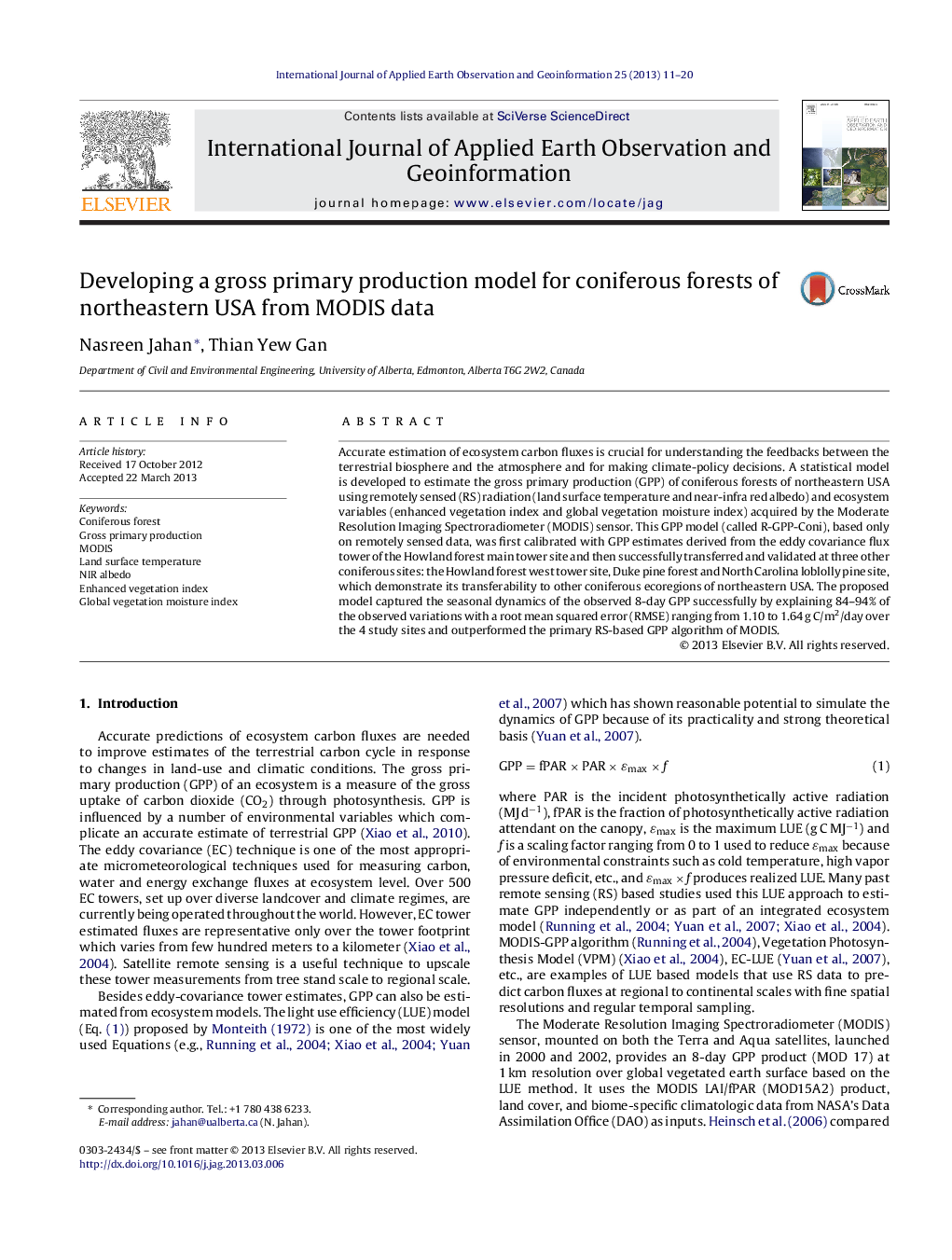| کد مقاله | کد نشریه | سال انتشار | مقاله انگلیسی | نسخه تمام متن |
|---|---|---|---|---|
| 4464820 | 1621835 | 2013 | 10 صفحه PDF | دانلود رایگان |

• A new model for estimating gross primary production of coniferous forest is presented.
• This study explored the potential application of albedo and GVMI in GPP estimation.
• The proposed model depends only on satellite-based data.
• This model does not need any ground-based meteorological data.
• The model was successfully validated at 3 coniferous sites.
Accurate estimation of ecosystem carbon fluxes is crucial for understanding the feedbacks between the terrestrial biosphere and the atmosphere and for making climate-policy decisions. A statistical model is developed to estimate the gross primary production (GPP) of coniferous forests of northeastern USA using remotely sensed (RS) radiation (land surface temperature and near-infra red albedo) and ecosystem variables (enhanced vegetation index and global vegetation moisture index) acquired by the Moderate Resolution Imaging Spectroradiometer (MODIS) sensor. This GPP model (called R-GPP-Coni), based only on remotely sensed data, was first calibrated with GPP estimates derived from the eddy covariance flux tower of the Howland forest main tower site and then successfully transferred and validated at three other coniferous sites: the Howland forest west tower site, Duke pine forest and North Carolina loblolly pine site, which demonstrate its transferability to other coniferous ecoregions of northeastern USA. The proposed model captured the seasonal dynamics of the observed 8-day GPP successfully by explaining 84–94% of the observed variations with a root mean squared error (RMSE) ranging from 1.10 to 1.64 g C/m2/day over the 4 study sites and outperformed the primary RS-based GPP algorithm of MODIS.
Journal: International Journal of Applied Earth Observation and Geoinformation - Volume 25, December 2013, Pages 11–20